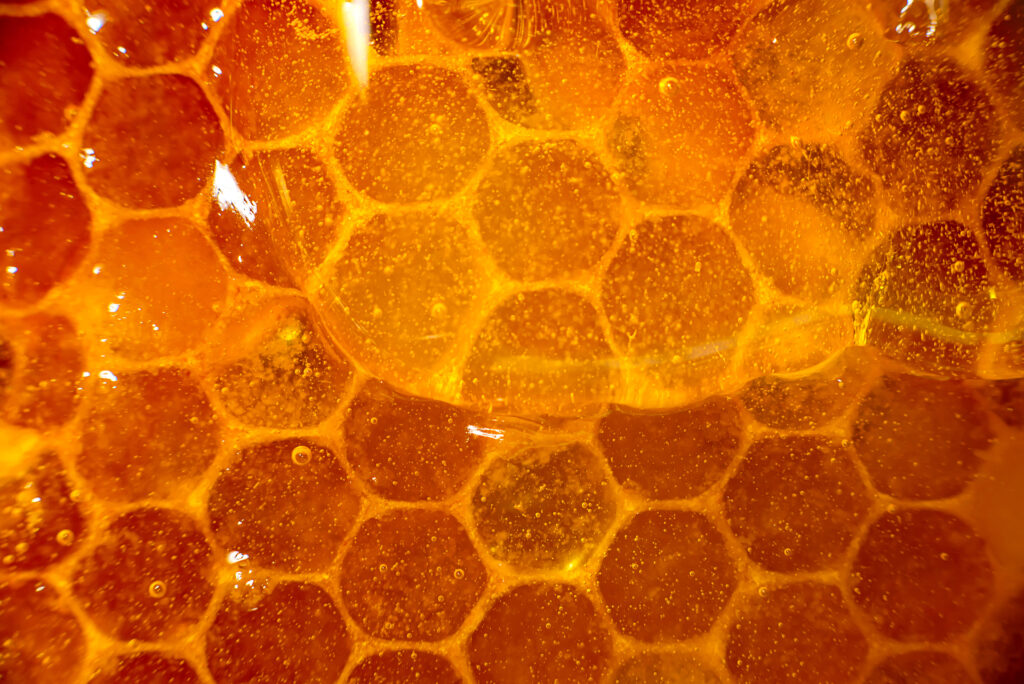
September marks the time of year when honey collection winds down and beehives are prepared for the winter. The month is observed as National Honey Month, and we’d like to take the opportunity to recognize the vital role beekeepers serve in sustaining Connecticut agriculture, while increasing biodiversity and food security.
Beekeeping has been part of Connecticut agriculture for hundreds of years, with historical records showing colonists keeping hives as far back as 1644. Most honey bees in the state today are tended by hobbyists who keep a few hives on their property. However, there are also some larger commercial operations that rent colonies for agricultural pollination, as well as more than two dozen apiaries.
Honey production in Connecticut is modest compared to many other states. According to the Connecticut Agricultural Experiment Station (CAES), there are approximately 930 registered beekeepers in Connecticut tending to 7,110 hives. There are also certain challenges in the state to keeping bees, including inconsistent weather and homeowners removing flowers considered to be weeds.
Nevertheless, Connecticut residents have shown strong enthusiasm for beekeeping. Since 1891, the Connecticut Beekeepers Association has been working to increase awareness of the importance of bees to the environment. Together with the Backyard Beekeepers Association and the Eastern Connecticut Beekeepers Association, it offers information and educational opportunities for those who are tending their own hives or wish to do so.
Beekeeping benefits
If you keep honey bees on your property, one of the main benefits is the ability to harvest honey. This is a delicious sugar substitute and has also been used for health treatments, such as soothing coughs or even topical application to treat burns. Apiaries also offer products such as beeswax, bee pollen, royal jelly, and skin care products.
Bees have an outsized impact on agricultural production as well, with honey bees estimated to be responsible for 80 percent of all insect pollination of flowering plants. This translates to an agricultural impact whose value is 10 to 20 times greater than the value of the honey and beeswax they produce. In Connecticut, bees are essential for the pollination of important CT Grown crops such as apples, pears, peaches, watermelons, cucumbers, squash, pumpkins, and berries.
Unfortunately, bee populations have been declining in recent years due to factors like pests, diseases, and environmental factors such as exposure to harmful pesticides. These challenges are putting more stress on Connecticut’s hives, which in turn is creating more concern for Connecticut farms about effective pollination.
Helping bees
One way Connecticut residents can support honey bees is to plant a pollinator garden. This process involves the removal of invasive plants as well as the sowing of native plants like highbush blueberry, New England aster, New Jersey tea, swamp milkweed, wild geranium, and wrinkleleaf goldenrod.
Avoid the use of pesticides and insecticides, which can be harmful to bees. Go easy on the herbicides as well. Dandelions, while usually considered a weed, are a particularly useful source of pollen and nectar; allowing them to grow in your yard is a great way to help bees.
Don’t be too aggressive with removing fallen leaves during the autumn. Bee queens often nest under leaf litter, so leaving some areas undisturbed will provide them with a habitat. You can also minimize habitat disturbances by conducting any soil management during the late summer or fall.